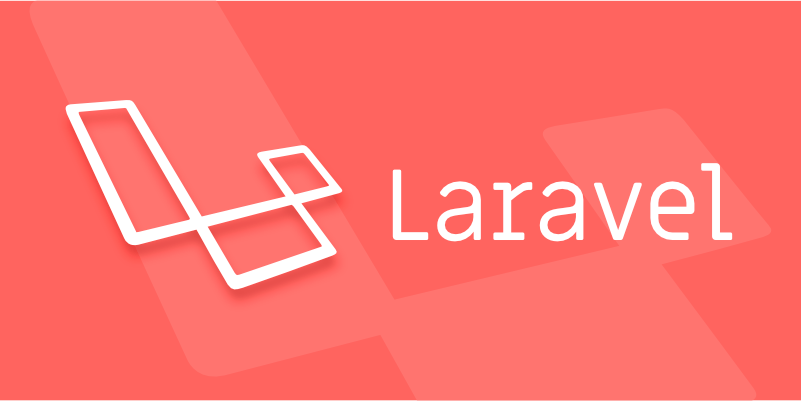Generating and using database factories in Laravel.
Database factories are tools in Laravel for generating model fake data. It quickly creates the data required for testing or development by defining field rules. For example, after using php artisan make:factory to generate factory files, sets the generation logic of fields such as name and email in the definition() method, and creates records through User::factory()->create(); 1. Supports batch generation of data, such as User::factory(10)->create(); 2. Use make() to generate uninvented data arrays; 3. Allows temporary overwriting of field values; 4. Supports association relationships, such as automatically creating associated articles; 5. Provides state functions to define specific scenario data; 6. Supports JSON field serialization processing.

In Laravel, Database Factory is a very practical tool, especially when you need to quickly generate test data. It helps you define the data structure of your model and create a large amount of simulated data in a neat way for development or testing environments.

What is a database factory?
Database factories are essentially blueprints for generating fake data for Eloquent models. You can understand it as a template to tell Laravel what fields should be filled in and how to fill in when you want to "create" a user record. This data can be used for unit testing or to populate the development stage database.
Laravel comes with its own Faker library, so when you write a factory, you can directly use it to generate common data such as random names, email addresses, and other common data.

How to generate a factory?
You can use the Artisan command to generate the corresponding factory file for a model:
php artisan make:factory UserFactory --model=User
This command will create a UserFactory.php file in database/factories directory. Open it and you will see a basic structure with a definition() method that returns the "generate rules" of each field of the model.

For example, you can write this:
public function definition()
{
Return [
'name' => fake()->name(),
'email' => fake()->unique()->safeEmail(),
'password' => bcrypt('password'),
];
} Here, the fake() function is used to call Faker to generate random names and unique mailboxes. Note that if you want certain fields not to be repeated, remember to add unique() , otherwise the insertion may fail.
How to use factories to generate data?
After the factory is generated, you can use it in Tinker or Seeder or test code.
For example in Tinker:
php artisan tinker
Then enter:
User::factory()->create();
This will create a user and save it to the database according to your factory definition.
If you want to generate multiple users, you can add parameters:
User::factory(10)->create();
This creates 10 user records.
If you just want to get the data array instead of directly repository, you can use make() :
User::factory(5)->make();
This method is not written to the database and is suitable for temporary use in testing.
In addition, you can temporarily overwrite the values of certain fields:
User::factory()->create([
'name' => 'Test User',
]);In this way, the name field will not go to Faker, but will be fixed.
What else can the factory do?
Association relationship : You can let the factory automatically create association data, for example, a user has an article:
User::factory()->hasPosts(3)->create();
This requires that you have defined PostFactory and that there is a correct Eloquent relationship between User and Post.
States : You can define some "states" to indicate data changes in a specific situation. For example, a disabled user:
public function disabled() { return $this->state(fn (array $attributes) => ['active' => false]); }When using:
User::factory()->disabled()->create();
Serialized fields : If your field is of JSON type, such as
meta, you can directly construct an array in the factory, and Laravel will automatically convert it to JSON storage.- If you often use Tinker to create data, it is recommended to write commonly used factory calls into small functions or alias to save time.
- When using
factory()->count(n), be careful not to insert too much data at once, as it may lag or even fail. - The factory association between different models must be ensured to be correct, otherwise errors are prone to errors.
Tips
Basically that's it. A factory is not a profound thing, but using it well can really save a lot of effort.
The above is the detailed content of Generating and using database factories in Laravel.. For more information, please follow other related articles on the PHP Chinese website!

Hot AI Tools

Undress AI Tool
Undress images for free

Undresser.AI Undress
AI-powered app for creating realistic nude photos

AI Clothes Remover
Online AI tool for removing clothes from photos.

Clothoff.io
AI clothes remover

Video Face Swap
Swap faces in any video effortlessly with our completely free AI face swap tool!

Hot Article

Hot Tools

Notepad++7.3.1
Easy-to-use and free code editor

SublimeText3 Chinese version
Chinese version, very easy to use

Zend Studio 13.0.1
Powerful PHP integrated development environment

Dreamweaver CS6
Visual web development tools

SublimeText3 Mac version
God-level code editing software (SublimeText3)
 What is Configuration Caching in Laravel?
Jul 27, 2025 am 03:54 AM
What is Configuration Caching in Laravel?
Jul 27, 2025 am 03:54 AM
Laravel's configuration cache improves performance by merging all configuration files into a single cache file. Enabling configuration cache in a production environment can reduce I/O operations and file parsing on each request, thereby speeding up configuration loading; 1. It should be enabled when the application is deployed, the configuration is stable and no frequent changes are required; 2. After enabling, modify the configuration, you need to re-run phpartisanconfig:cache to take effect; 3. Avoid using dynamic logic or closures that depend on runtime conditions in the configuration file; 4. When troubleshooting problems, you should first clear the cache, check the .env variables and re-cache.
 How to create a helper file in Laravel?
Jul 26, 2025 am 08:58 AM
How to create a helper file in Laravel?
Jul 26, 2025 am 08:58 AM
Createahelpers.phpfileinapp/HelperswithcustomfunctionslikeformatPrice,isActiveRoute,andisAdmin.2.Addthefiletothe"files"sectionofcomposer.jsonunderautoload.3.Runcomposerdump-autoloadtomakethefunctionsgloballyavailable.4.Usethehelperfunctions
 How to mock objects in Laravel tests?
Jul 27, 2025 am 03:13 AM
How to mock objects in Laravel tests?
Jul 27, 2025 am 03:13 AM
UseMockeryforcustomdependenciesbysettingexpectationswithshouldReceive().2.UseLaravel’sfake()methodforfacadeslikeMail,Queue,andHttptopreventrealinteractions.3.Replacecontainer-boundserviceswith$this->mock()forcleanersyntax.4.UseHttp::fake()withURLp
 How to implement a referral system in Laravel?
Aug 02, 2025 am 06:55 AM
How to implement a referral system in Laravel?
Aug 02, 2025 am 06:55 AM
Create referrals table to record recommendation relationships, including referrals, referrals, recommendation codes and usage time; 2. Define belongsToMany and hasMany relationships in the User model to manage recommendation data; 3. Generate a unique recommendation code when registering (can be implemented through model events); 4. Capture the recommendation code by querying parameters during registration, establish a recommendation relationship after verification and prevent self-recommendation; 5. Trigger the reward mechanism when recommended users complete the specified behavior (subscription order); 6. Generate shareable recommendation links, and use Laravel signature URLs to enhance security; 7. Display recommendation statistics on the dashboard, such as the total number of recommendations and converted numbers; it is necessary to ensure database constraints, sessions or cookies are persisted,
 How to run a Laravel project?
Jul 28, 2025 am 04:28 AM
How to run a Laravel project?
Jul 28, 2025 am 04:28 AM
CheckPHP>=8.1,Composer,andwebserver;2.Cloneorcreateprojectandruncomposerinstall;3.Copy.env.exampleto.envandrunphpartisankey:generate;4.Setdatabasecredentialsin.envandrunphpartisanmigrate--seed;5.Startserverwithphpartisanserve;6.Optionallyrunnpmins
 How to seed a database in Laravel?
Jul 28, 2025 am 04:23 AM
How to seed a database in Laravel?
Jul 28, 2025 am 04:23 AM
Create a seeder file: Use phpartisanmake:seederUserSeeder to generate the seeder class, and insert data through the model factory or database query in the run method; 2. Call other seeder in DatabaseSeeder: register UserSeeder, PostSeeder, etc. in order through $this->call() to ensure the dependency is correct; 3. Run seeder: execute phpartisandb:seed to run all registered seeders, or use phpartisanmigrate:fresh--seed to reset and refill the data; 4
 How to build a REST API with Laravel?
Jul 30, 2025 am 03:41 AM
How to build a REST API with Laravel?
Jul 30, 2025 am 03:41 AM
Create a new Laravel project and start the service; 2. Generate the model, migration and controller and run the migration; 3. Define the RESTful route in routes/api.php; 4. Implement the addition, deletion, modification and query method in PostController and return the JSON response; 5. Use Postman or curl to test the API function; 6. Optionally add API authentication through Sanctum; finally obtain a clear structure, complete and extensible LaravelRESTAPI, suitable for practical applications.
 Using Events and Listeners in Laravel.
Jul 26, 2025 am 08:21 AM
Using Events and Listeners in Laravel.
Jul 26, 2025 am 08:21 AM
Using events and listeners in Laravel is an effective way to decouple main logic. 1. Create events and listeners can be generated and bound to EventServiceProvider through the Artisan command or enable the automatic discovery mechanism. 2. In actual use, it is necessary to note that an event can correspond to multiple listeners, queue failure retry policy, keep the listener lightweight, and register event subscribers. 3. During testing and debugging, you should confirm the event triggering, listener binding, and queue drive status, and set QUEUE_CONNECTION=sync to perform synchronously to facilitate troubleshooting. 4. Advanced tips include dynamically controlling the execution or registration of the listener according to conditions, but it is recommended to advanced users. Mastering these key points can help improve code control







